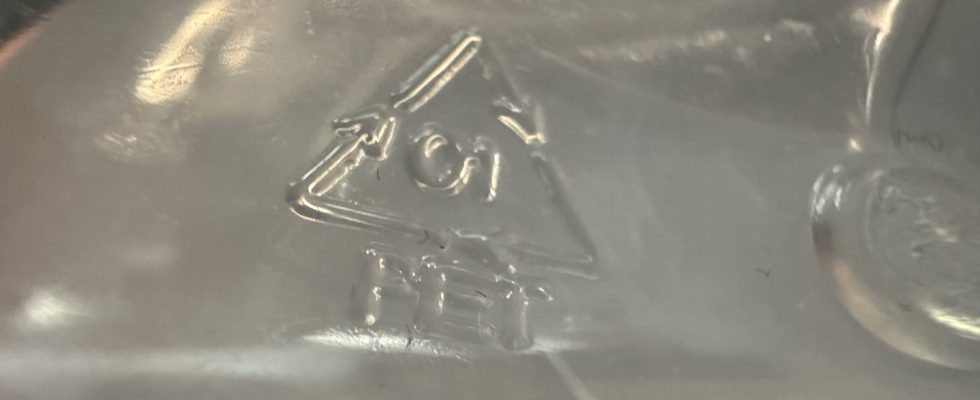This number surrounded by a triangle present on plastic packaging has real meaning and provides important information.
Plastic management has become one of the main challenges in protecting the environment. Although it is omnipresent on the planet, the particularly long lifespan of plastic poses a major problem. Attempts to reduce its use and manage its use are increasing. Reusable utensils have developed in recent years, particularly water bottles, in order to reduce the use of disposable bottles.
But whether it is disposable with bottles or durable with bottles or other containers, plastic is still the subject of suspicion regarding its impact on the planet and on health. This is where a pictogram present on the various plastic packaging and in particular under water bottles comes into play. It appears as a number in the middle of a triangle and provides a lot of very useful information about the plastic in question.
On plastic packaging, this number going from 1 to 7 surrounded by a triangle often goes unnoticed but is a real mine of information. Each number actually corresponds to a type of plastic. The number 1 indicates the presence of polyethylene terephthalate, better known by the acronym “PET”, the number 2 represents high density polyethylene (HDPE), the number 3 corresponds to polyvinyl chloride (PVC), the number 4 indicates polyethylene low density (LDPE), the number 5 represents polypropylene (PP), the number 6 polystyrene (PS) and the 7 other less common types of plastics.
According to information from the Environment and Energy Management Agency (Ademe) transmitted to Release, the type of plastic commonly used for packaging is number 1, i.e. polyethylene terephthalate. We find these different types of plastics almost everywhere in everyday life. According to Ademe, number 2 is found in the making of containers for cleaning products and medicines. The number 4 is used in plastic bags and sachets. The number 5 is also found in bottles, trays or flexible packaging. And number 6 is the one used for making yogurt pots.
Contrary to usual beliefs, this pictogram does not mean that the bottle is recyclable. However, if this data alone is important, it is appropriate to add the health risks that these plastics can represent. As Libération indicates thanks to studies by ANSES (National Agency for Food, Environmental and Occupational Health Safety), these plastics, the use of which is regulated, can release substances of which “some are causing endocrine disrupting effects. Among these substances we find in particular “alkylphenols, benzophenones, BPA, phthalates”. The presence of these controversial components means that it is also not recommended to reuse plastic water bottles.
